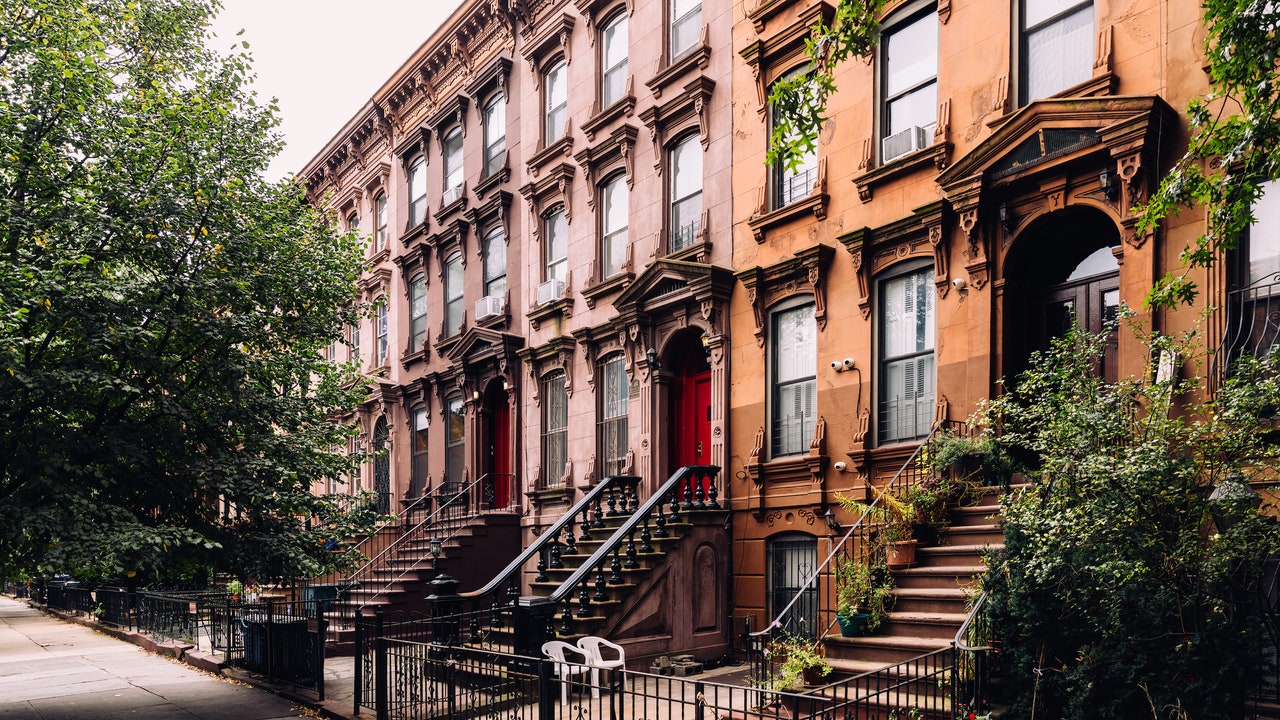“Historically, the term ‘town house’ implied the building was a city home for someone having a country home elsewhere, while ‘row house’ implied a more humble urban dwelling,” Thompson says. “Today, though, ‘town house’ is a term also used in suburban areas and may refer to non-uniform single-family homes within a larger multifamily housing complex. A ‘town house’ has become part of multifamily-developer parlance and suggests a large housing complex, while ‘row house’ implies a historic structure in an older neighborhood.”
Brownstones, however, are a different case. Generally, neither “row house” nor “townhouse” is synonymous with “brownstone,” one of the signature architectural styles of Brooklyn in New York City. A brownstone is called that because it refers to the particular reddish-brown sandstone that was quarried in New England and New Jersey and used to build many homes in New York City in the 1800s, mostly row houses and town houses. A row house (or town house) can be a brownstone, but not all of them are (even those in Brooklyn). In short, brownstone refers to a building made with a unique material, not an architectural style. That said, the brownstones in New York City are typically of the Italianate style, though many brownstones were razed to make way for new developments.
History of Row Houses
In America, row houses were an answer to the need for decent housing in rapidly growing cities in places like New York City or Boston. They allowed one or more families to have a place big enough to live in but, by using common walls between the buildings, didn’t waste any land. Their uniform structure and appearance also made it more efficient and economical for the builders and drove down their price.
“Row houses have small footprints but a great number of floors (from two to six) and were traditionally found close to the business areas in dense cities where single-family detached homes were uncommon,” Thompson says.
Not surprisingly, many row houses in the US date to the 19th century and early 20th century, when these cities grew explosively, and are often associated with Victorian styles of architecture. As the cities and people who lived in row houses changed, so did the row houses themselves, going from an economical choice, to almost synonymous with urban blight, to now being a status symbol in the 21st century.

